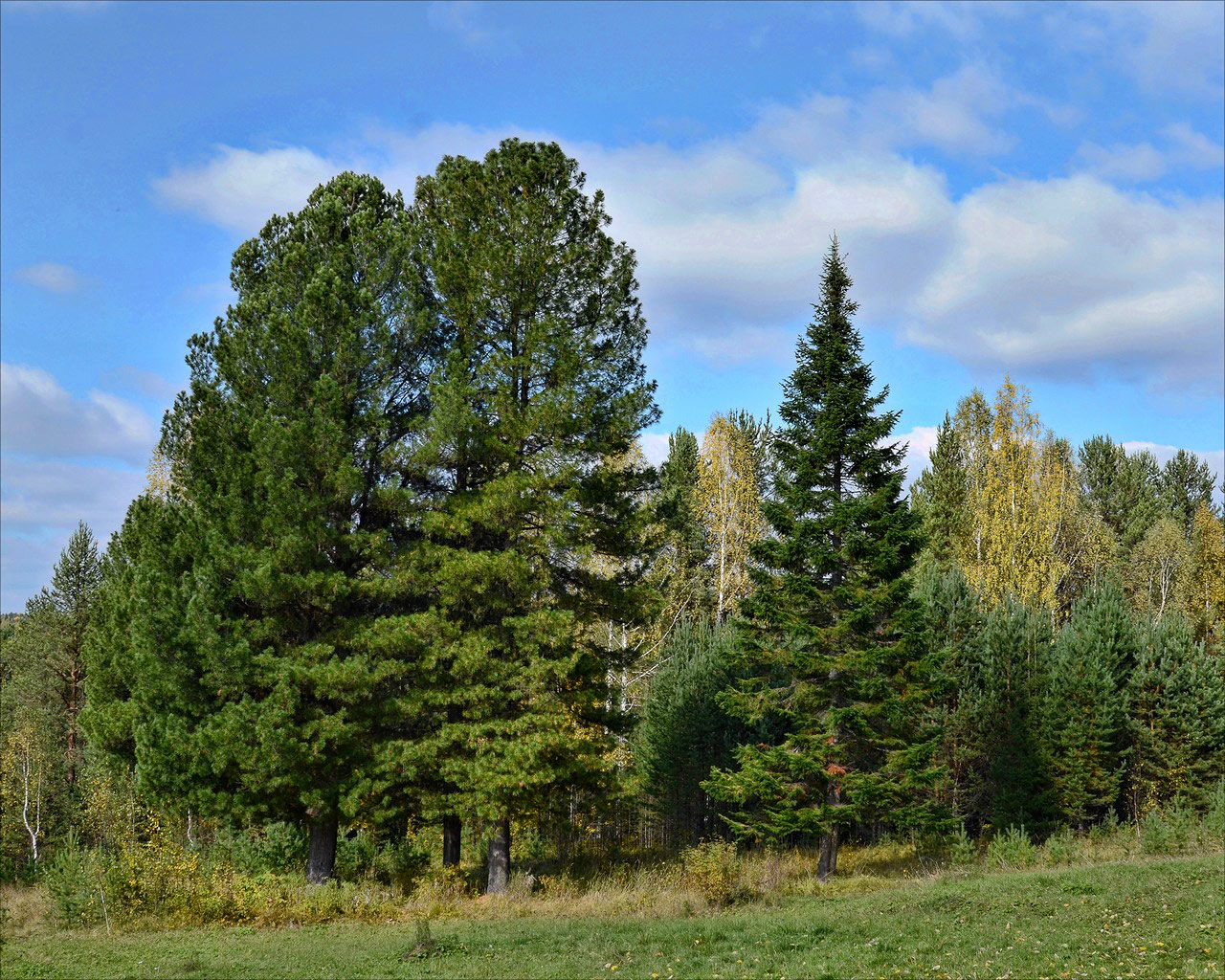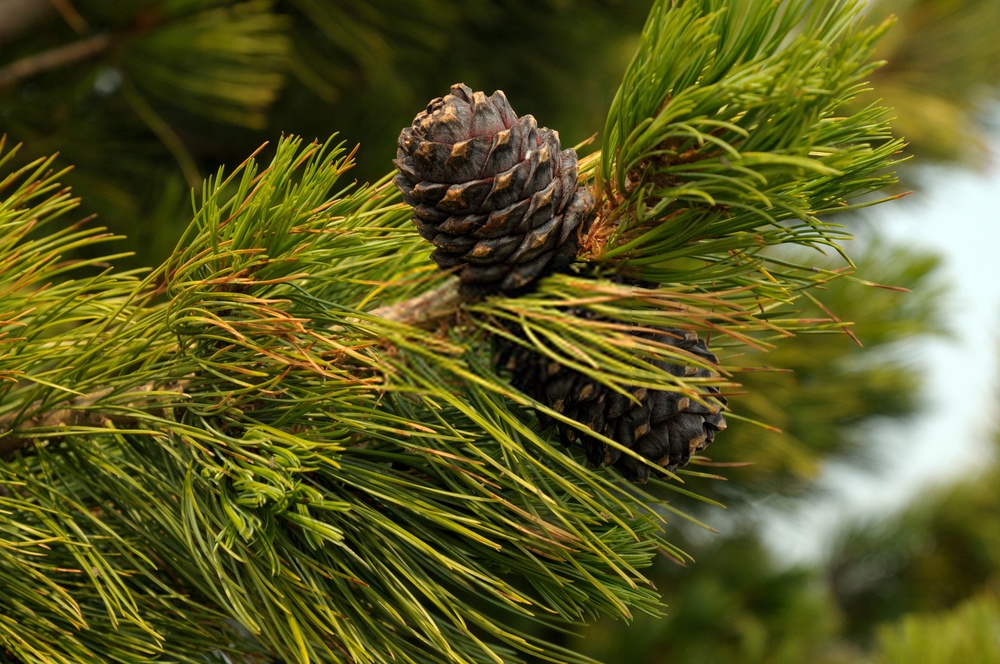 |
This took place in the vicinity of Nizhny Tagil (Russia) in the early 90s. Lumberjacks were cutting a clearing in a forest. In their brigade there was one man with an inquiring mind. During the breaks, in order to pass the time, he came up with an entertainment: counting annual rings on cut trees.
He counted and marveled: “this tree is already 80 years old… this one is even more”. Then he noticed that all trees periodically show some kind of flawed rings: they were not wide enough or even and their color appeared unhealthy. All cut trees had a clearly expressed “disease” in form of 5-6 defective rings going one after another. The lumberjack was puzzled and decided to calculate in what years the trees were “sick”. The result stunned him!
It turned out that for all trees the time of “illness” falls on 1941-1945 – the World War II (Great Patriotic War on Russian territory). It appears that the trees felt that something terrible was happening, together with the people they suffered from the hardships of the war… On the Solomon Islands, when the locals want to clear a piece of forest for their fields, they do not cut down trees, they just gather there as a whole tribe and swear at the trees.
After a few days, the trees begin to wilt slowly but surely. And eventually … they die. Experiments carried out by biologists give an amazing result: plants are able to see, taste, smell, touch and hear. Moreover, they can communicate, suffer, perceive hatred and love, remember and think. In short, they have consciousness and feelings.
|
The plants are not indifferent
|
 |
Clive Baxter, an expert in a lie detector, had a crazy idea of attaching lie detector sensors to the leaves of a plant – a window flower in a laboratory in order to test something.
The recorder was motionless for a long time, the flower was silent. This continued until one day next to this flower, a philodendron, someone broke an egg. At the same instant the recorder jerked and drew a peak. The plant reacted to the death of a living. When the laboratory staff began to cook dinner and dipped shrimp into boiling water, the recorder reacted in the most active way again. To check if this was an accident, the shrimp were dipped into boiling water at intervals. And every time the recorder displayed a sharp peak.
The plant reacted just as unmistakably and instantly if something happened to a person, especially if this was a person who took care of the plant. When Baxter cut himself, the recorder immediately jerked and began to move.
|
Plants can be afraid
|
In the course of the experiment of the English biologist L. Watson, one of the laboratory employees watered a geranium flower every day, loosened the earth, and wiped the leaves. The other, on the contrary, with a sullen look, caused all kinds of harm to the flower: he broke branches, pricked the leaves with a needle, burned them with fire. The recorder always marked the presence of the “benefactor” with an even straight line. But as soon as the “villain” entered the room, the geranium immediately recognized him: the recorder immediately began to draw sharp peaks. If a “benefactor” entered the room at that moment, the peaks were immediately replaced by a straight line, the alarm went away: after all, the “benefactor” could protect the plant from the “villain”!
|
Plants understand
|
It has been proven many times that plants are able to perceive words addressed to them. Back in the last century, the famous American botanist L. Burbank, creating a new variety, simply talked with the plant for a long time.
For example, to create a variety of a thornless cactus, he repeated many times to the shoots: “You don’t need thorns, you have nothing to fear. I will protect you. ” This was his only method.
You cannot believe this, but the variety, previously known for its thorns, began to grow without thorns and passed on this property to its offsprings. By the same method, Burbank bred a new variety of potatoes, early ripening plums, different types of flowers, fruit trees, many of which bear his name to this day … Someone may consider this fact fantastic, but this does not stop it being a Fact.
|
Plants remember
|
 |
Biologists from the University of Clermont (France) were convinced that plants have memory by conducting an experiment that anyone can repeat if they wish. When a sprout appeared from the ground with the first two leaves arranged symmetrically, one leaf was pricked several times with a needle. The plant seemed to be given to understand – in the direction from which the injections came, there is something bad for it, there is a danger. Immediately thereafter (after a few minutes), both leaves were removed. Now the plant did not have any injured tissue left that would remind it from which side the attack was made. The shoot continued to grow, sprouting new leaves, branches and buds.
But at the same time, a strange asymmetry was observed: its trunk itself and all the foliage were directed away from the side from which the injections had once been delivered. Even flowers were blooming on the other, “safe” side. After many months, the flower clearly remembered what had happened, and from which side that evil came …
|
Plants comprehend
|
Back in 1959, an article by V. Karmanov with the prosaic title “The use of automation and cybernetics in agriculture” was published in the “Reports of the Academy of Sciences of the USSR”. The article described the experiments in the laboratory of biocybernetics of the Institute of Agrophysics of the Academy of Sciences of the USSR. Sensitive devices were installed in the institute’s greenhouse, which noted, that when the soil dries out, the bean shoots that grew there began to emit pulses in the low frequency range.
The researchers tried to consolidate this connection. As soon as the devices perceived such a signal, a special device immediately turned on watering. Judging by the results, due to this, the plants developed a kind of conditioned reflex. As soon as they needed watering, they immediately gave a signal. Moreover, the plants soon developed a watering regime for themselves without human intervention. Instead of plentiful one-time watering, they chose the most optimal option for themselves and turned on the water every hour for two minutes.
Remember the experiments with conditioned reflexes conducted by Academician Pavlov? Biologists of the Alma-Ata University conducted a similar experiment with a plant. They passed an electric current through the stem of the philodendron. The sensors showed that he was reacting very actively to this. It can be assumed that it did not like it. At the same time, turning on the current, a stone was placed next to the flower in the same place every time. This was repeated many times. At some point, it was enough just to put a stone – and the philodendron reacted to it in the same way as if he had been given another electric shock.
The plant has developed a stable association between a stone placed next to it and an electric shock; in other words: “conditioned reflex”! By the way, Pavlov considered the conditioned reflex is exclusively a function of higher nervous activity …
|
 |
Plant transmit signals
|
Scientists conducted the following experiment: a large walnut tree was mercilessly thrashed on the branches with a stick, and after laboratory tests it turned out that the percentage of tannin – a substance that has a destructive effect on pests – in the foliage of the walnut tree during the “execution” literally in a matter of minutes sharply increased. In addition, its leaves become inedible for animals! And at the same time an oak standing nearby, which no one touched, as if receiving signals from a walnut tree, also sharply increased the tannin content in its foliage!
Numerous experiments by English biologists have also proved that trees in some incomprehensible way are able to send signals to each other and receive them! For example, in the savannah, vegetation is sparsely located, at a considerable distance from each other. And when antelopes come to any tree or shrub to feast on its foliage, neighboring plants immediately receive a signal of “attack”.
Their leaves, having released special substances, become inedible, and this kind of danger signal spreads with lightning speed over a rather large radius. If the antelopes fail to get out of this “zone”, it can happen that among the green trees and bushes whole herds of animals may die of hunger …
Scientists were amazed when studies confirmed the fact that trees transmitted an alarm to each other over a huge distance. And as soon as they can really notify each other about danger and react to this kind of signal, then they are biologically not much different from the representatives of the animal world. The only “but” that prevents researchers from recognizing the green world of the planet as an intelligent creature is that trees cannot move.
|
Plants love
|
In one laboratory that studies the properties of plants, a beautiful laboratory assistant looked after the plants. And soon the laboratory staff realized that one of the subjects – a magnificent ficus – “fell in love” with a girl. As soon as she entered the room, the flower experienced a surge of emotions – on the monitors it looked like a dynamic sinusoid of bright red color.
When a laboratory assistant watered a flower or wiped dust from its leaves, the sinusoid trembled with happiness. Once the girl allowed herself to flirt irresponsibly with a colleague, and the ficus began … to be jealous. Yes, with such force that the devices were off scale. And the solid black stripe on the monitor indicated in which black pit of despair the loving plant had plunged.
|




